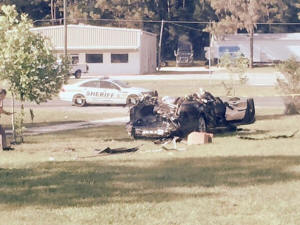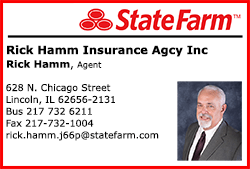|
U.S. safety agency seeks answers on fatal
Tesla Autopilot crash
 Send a link to a friend
Send a link to a friend
 [July 13, 2016]
By David Shepardson [July 13, 2016]
By David Shepardson
WASHINGTON (Reuters) - U.S. highway safety
regulators have demanded that Tesla Motors Inc hand over detailed
information about the design, operation and testing of its Autopilot
technology following a May 7 fatal crash in which the system was in use.
The U.S. National Highway Traffic Safety Administration (NHTSA),
investigating an accident that has increased scrutiny of automated
driving technology, also wants to know what Tesla investigators have
learned about the crash.
The agency's nine-page letter dated July 8 was made public Tuesday.
It requires the Palo Alto-based automaker to file responses in the
coming weeks.
Joshua Brown was killed when his vehicle, operating on Autopilot in
Florida, drove under a tractor trailer. It was first known fatality
to involve a Model S operating on the Autopilot system that takes
control of steering and braking in certain conditions.
The agency is seeking details of all design changes and updates to
Autopilot since it went into use last year, and information on
whether Tesla plans updates in the next four months.
It also wants records of how many times the system told drivers to
put their hands on the wheel and how often that led to the car
automatically reducing vehicle power.
Other questions include what Autopilot does when cameras and sensors
aren't working properly, how the system was tested, and how it
filters out "false positive events and interventions."
 NHTSA sends such letters as a part of its safety probes. Tesla
declined to comment on the letter. Its stock was little changed at
$224.65 a share, a decline of less than 0.1 percent.
The Wall Street Journal reported on Tuesday that Tesla Chief
Executive Elon Musk said the company has no plans to disable
Autopilot in the wake of the crash.
RECORDS AND DATA LOGS
When Tesla launched Autopilot in October, it said the system would
allow the vehicle "to steer within a lane, change lanes with the
simple tap of a turn signal, and manage speed by using active,
traffic-aware cruise control."
But it added a disclaimer in a blog post that "the driver is still
responsible for, and ultimately in control of, the car." Before
activating the service, drivers are informed on their screens that
they must keep their hands on the wheel.
In its letter, NHTSA said it wants records and data logs of all
crashes that could be linked to the software.
It disclosed that Tesla and NHTSA officials met on June 14 -- two
weeks before the agency opened a formal investigation. Tesla has
said it informed NHTSA of the crash on May 16.
NHTSA spokesman Bryan Thomas reiterated that the agency "has not
made any determination about the presence or absence of a defect in
the subject vehicles."
[to top of second column] |

A Tesla Model S involved in the fatal crash on May 7, 2016 is shown
with the top third of the car sheared off by the impact of the
collision of the Tesla with a tractor-trailer truck on nearby
highway and came to rest in the yard of Robert and Chrissy
VanKavelaar in Williston, Florida, U.S. on May 7, 2016. Courtesy
Robert VanKavelaar/Handout via REUTERS

Tesla, in a blog post late last month about the accident, described
Autopilot as being in a "public beta phase" and said customers have
to opt in before activation.
In a July 10 tweet, Musk wrote that "beta" for Tesla means "any
system (with) less than 1B miles of real world driving."
NHTSA said last week it is reviewing another crash in Pennsylvania
in which the driver reportedly said he was using Autopilot. Tesla
said then it had no reason to believe Autopilot had "anything to do"
with the accident.
The Pennsylvania State Police said on Tuesday that the Tesla driver,
Albert Scaglione of Farmington Hills, Michigan, was charged with
careless driving.
Tesla also said on Tuesday that its autosteer software was enabled
during a third crash involving a Model X in Montana on Sunday.
Autosteer is the steering function in Autopilot.
In that crash, the driver said Autopilot was engaged when the car
slammed into 13 guardrails, said Montana State Trooper Jade Shope.
The driver was issued an $85 ticket for careless driving.
Tesla said the data suggested "the driverís hands were not on the
steering wheel, as no force was detected on the steering wheel for
over two minutes after autosteer was engaged."
Tesla said the driver was using the feature on an undivided mountain
road - which the company advises against - and didn't respond to
alerts to put his hands on the wheel.
(Additional writing by Alexandria Sage; Editing by Chizu Nomiyama
and Jeffrey Hodgson)
[© 2016 Thomson Reuters. All rights
reserved.]
Copyright 2016 Reuters. All rights reserved. This material may not be published,
broadcast, rewritten or redistributed.

 |